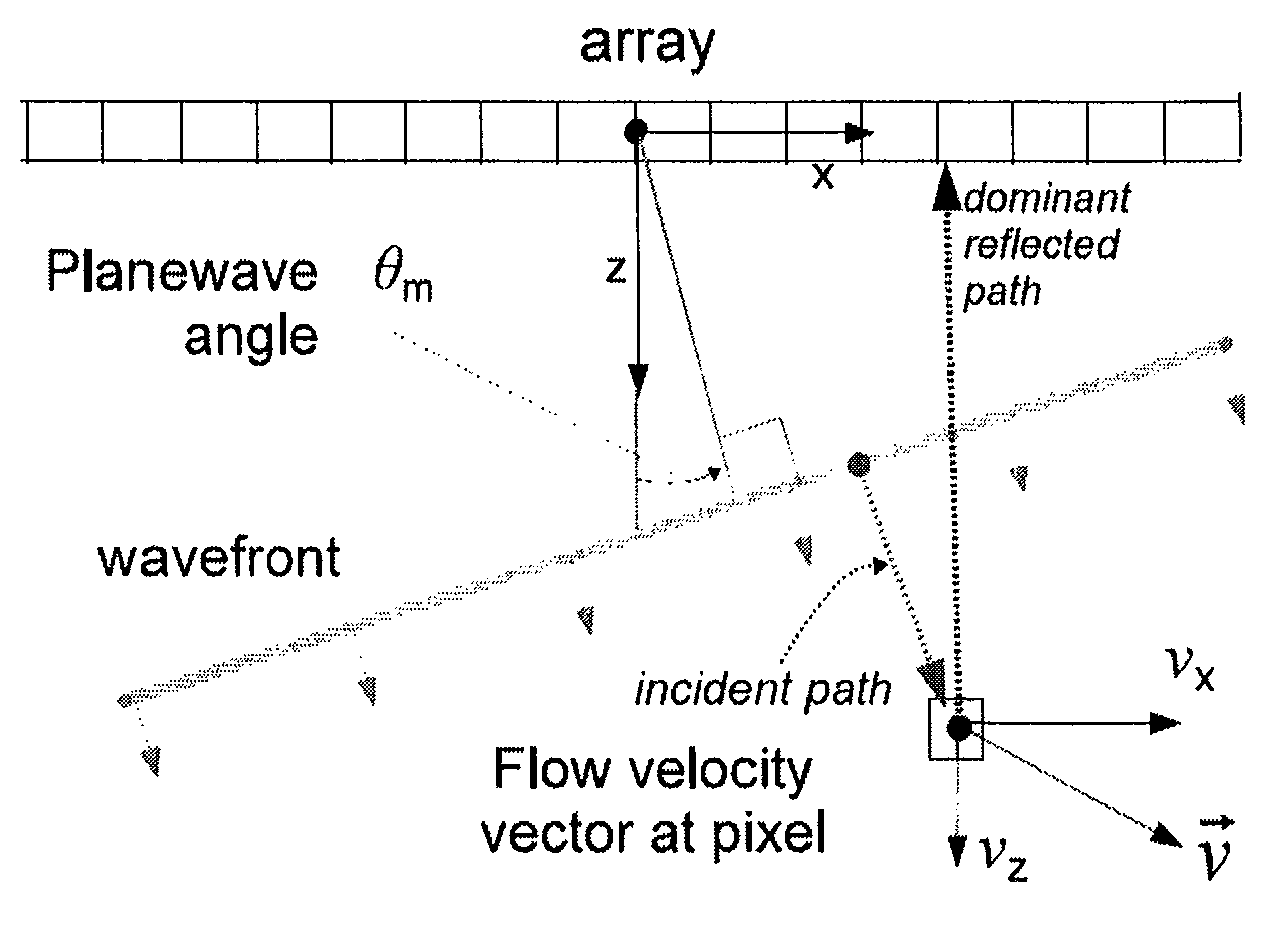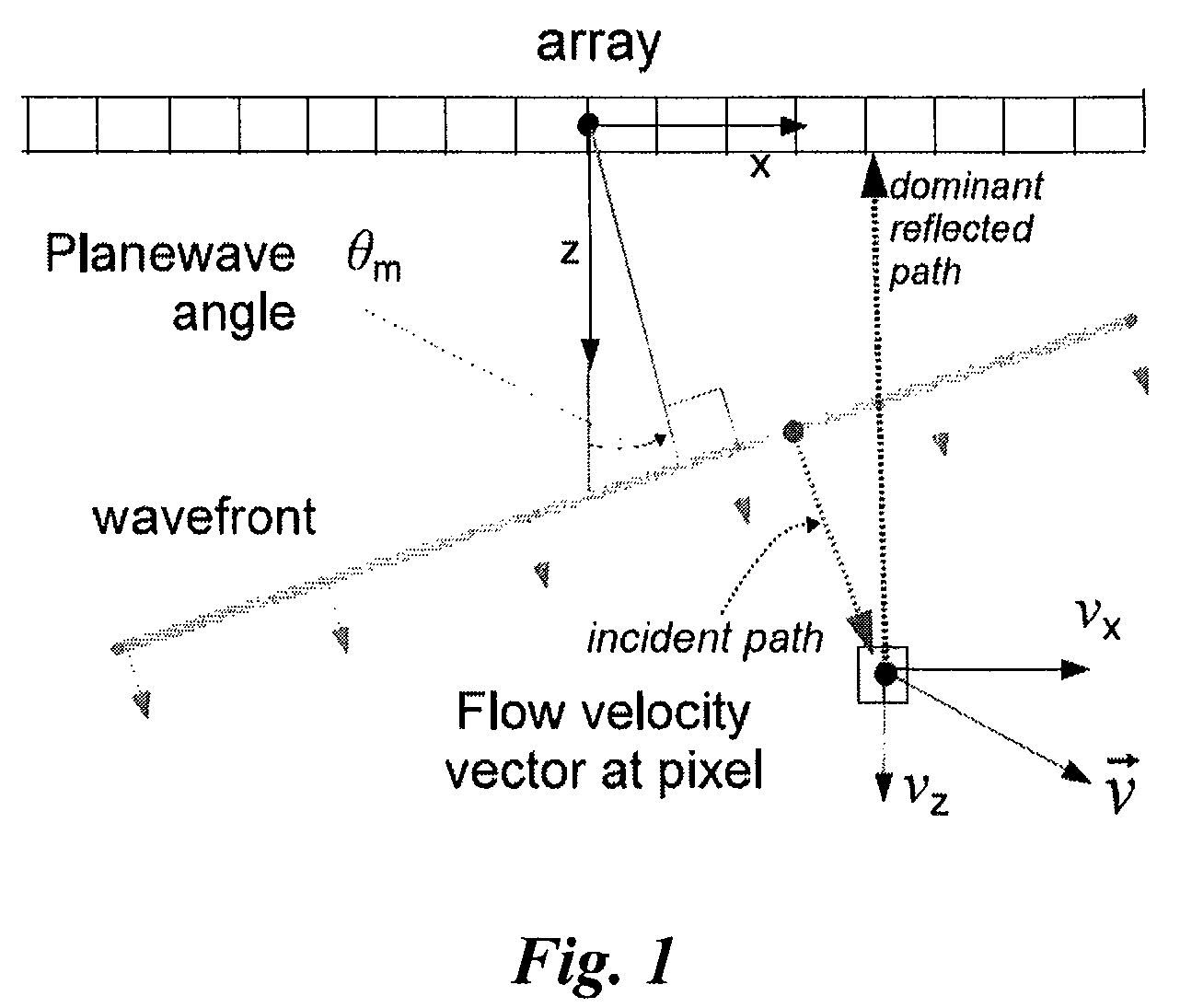Estimation and display for vector doppler imaging using plane wave transmissions
a plane wave transmission and doppler imaging technology, applied in the field of ultrasonic imaging, can solve the problems of more extensive processing capabilities, more expensive ultrasound systems, and too high equipment costs for significant adoption, and achieve the effects of improving accuracy, allowing flexibility in balancing frame rate and sensitivity
- Summary
- Abstract
- Description
- Claims
- Application Information
AI Technical Summary
Benefits of technology
Problems solved by technology
Method used
Image
Examples
Embodiment Construction
[0043]In the multi-angle Doppler-based method of vector flow estimation, a PWT measurement model is partitioned into nonlinear and linear components in a way that simplifies vector velocity computation. Each pixel's velocity vector predicts the IQ measurements at diverse angles of PWT ensembles through a nonlinear model, which we linearize by transforming with conventional CDI processing (clutter filtering and Kasai autocorrelation) to a set of Doppler frequencies. Velocity vector estimation then simplifies as the solution to a small linear weighted least squares (WLS) problem, conditioned on a hypothesized measurement bias due to aliasing. Weights derived from CDI autocorrelation lag variances account for clutter filtering effects. The nonlinearity of the original problem is thus reduced to a discrete search over a finite number of known aliasing bias vectors. Further, the WLS estimator covariance provides information used to qualify pixels.
[0044]In the gradient-based vector blood ...
PUM
 Login to View More
Login to View More Abstract
Description
Claims
Application Information
 Login to View More
Login to View More - R&D
- Intellectual Property
- Life Sciences
- Materials
- Tech Scout
- Unparalleled Data Quality
- Higher Quality Content
- 60% Fewer Hallucinations
Browse by: Latest US Patents, China's latest patents, Technical Efficacy Thesaurus, Application Domain, Technology Topic, Popular Technical Reports.
© 2025 PatSnap. All rights reserved.Legal|Privacy policy|Modern Slavery Act Transparency Statement|Sitemap|About US| Contact US: help@patsnap.com



